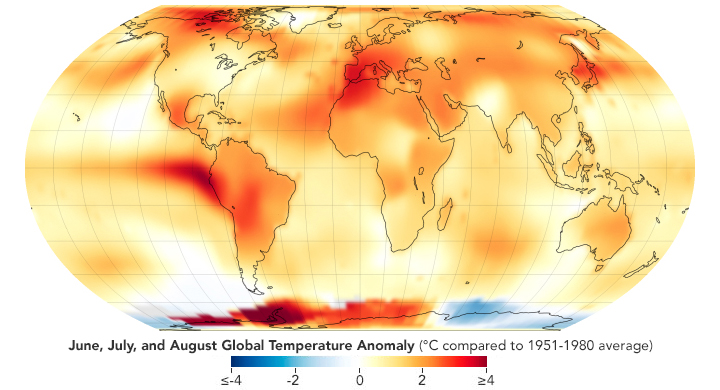After studying tree rings from the past 2,000 years, researchers have found that the Northern Hemisphere experienced its hottest summer in 2023 in the past two millennia.
By Paige Bennett
The researchers used both observed and modeled surface air temperatures for the period from June to August each year, along with 2,000 years of tree ring data. Their results, published in the journal Nature, showed that summer 2023 in the Northern Hemisphere was the hottest since the height of the Roman Empire.
“When you look at the long sweep of history, you can see just how dramatic recent global warming is,” Ulf Büntgen, co-author of the study and professor at University of Cambridge’s Department of Geography, said in a statement. “2023 was an exceptionally hot year, and this trend will continue unless we reduce greenhouse gas emissions dramatically.”
Additionally, the findings revealed that the Northern Hemisphere has already surpassed the 1.5-degree-Celsius limit outlined in the Paris Agreement, a target meant to curb global warming and prevent the worst impacts of climate change.
In September 2023, the European Union’s Copernicus Climate Change Service (C3S) found that the period from June through August 2023 was the hottest summer on record. Further, C3S predicted in December of last year that 2023 would be named the warmest year on record.
As the researchers of the new study pointed out, records are often limited either by location or by date, with instrumental evidence of warming typically dating back to about 1850 or later. The older recorded data can also be inconsistent.
Tree rings helped fill gaps of knowledge and provide more accurate measurements of historic summer temperatures, and the study confirmed the record-breaking summer heat.
The researchers linked many of the warmer summers in the tree ring data to El Niño events, but they noted that rising emissions and global warming have led to stronger El Niño events, like the one experienced in 2023.
“It’s true that the climate is always changing, but the warming in 2023, caused by greenhouse gases, is additionally amplified by El Niño conditions, so we end up with longer and more severe heat waves and extended periods of drought,” said Jan Esper, lead author of the study and professor at the Johannes Gutenberg University Mainz in Germany. “When you look at the big picture, it shows just how urgent it is that we reduce greenhouse gas emissions immediately.”
The study authors reported that El Niño could bring record-breaking temperatures in the early summer this year, although forecasters at the National Oceanic and Atmospheric Administration (NOAA) have found evidence of a weakening El Niño last month. NOAA officials have also predicted a 69% of a La Niña event by July to September.
A La Niña event, which could last from summer through early winter or longer, could bring other detrimental climate impacts. This climate event could bring frequent tropical storms and hurricanes to the eastern U.S., PBS reported, along with increased risks for drought and wildfires in the southwestern U.S.
Paige Bennett, based in Los Angeles, is a writer who is passionate about sustainability. She earned her Bachelor’s degree in Journalism from Ohio University and holds a certificate in Women’s, Gender and Sexuality Studies. She also specialized in sustainable agriculture while pursuing her undergraduate degree.






